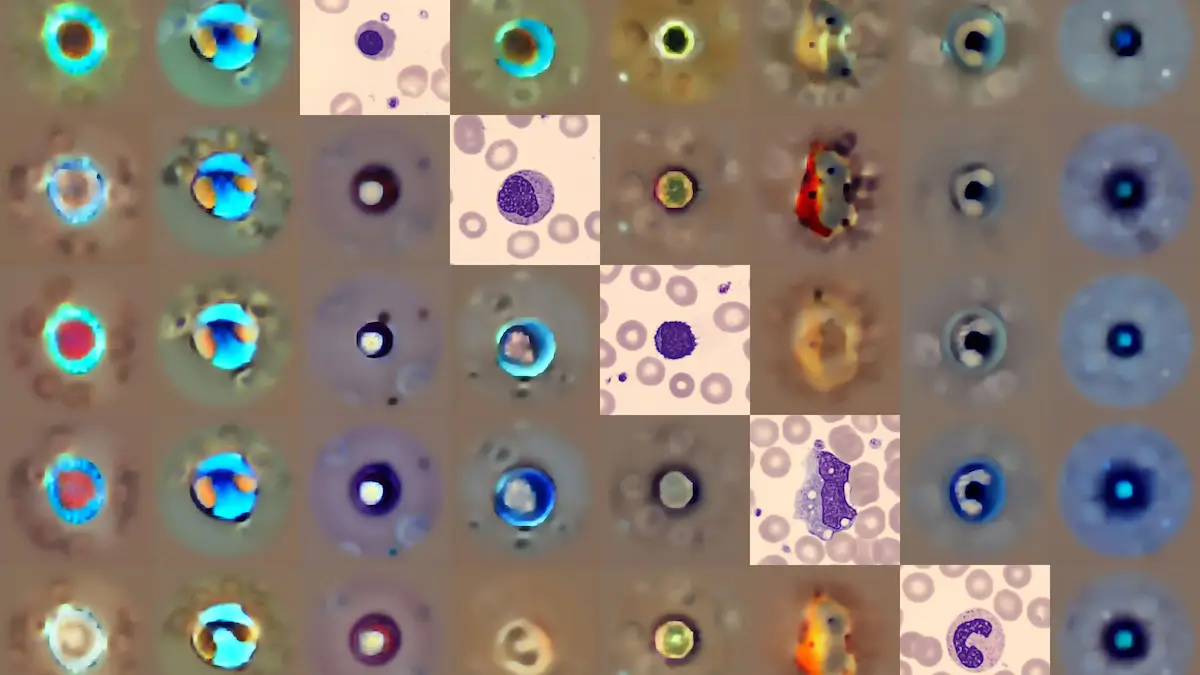The article Blood count analysis: AI outperforms experts in leukemia detection first appeared in the online magazine BASIC thinking. With our newsletter UPDATE you can start the day well informed every morning.

Researchers have developed a generative AI system called CytoDiffusion that analyzes the morphology of blood cells. The system is intended to achieve a precision that surpasses human experts in diagnosing blood diseases such as leukemia.
CytoDiffusion is based on one generative AIsimilar to the technology used in image generators such as DALL-E. The conventional analysis of blood cells using light microscopy is considered the cornerstone of hematological diagnostics.
However, this task is complex and requires expert interpretation due to subtle morphological differences and technical factors. Unlike conventional machine learning methods that primarily recognize patterns, CytoDiffusion aims to model the entire distribution of blood cell morphology.
The AI system was trained on over half a million images of blood smears collected at Addenbrooke’s Hospital in Cambridge.
Blood count analysis: AI detects leukemia better than experts
Manually analyzing a blood smear, which can contain thousands of cells, is impossible for humans to fully perform. CytoDiffusion can automate this process, handling routine cases independently and highlighting unusual or rare cells for review by a doctor.
According to the researchers, the AI system detects abnormal leukemia-related cells with significantly higher sensitivity than existing systems. A key advantage of CytoDiffusion is its ability to quantify one’s own uncertainty, what experts call “metacognitive” awareness.
This is crucial for clinical decisions. While the model was only slightly more accurate than humans, it was better at identifying when it was uncertain. It made no incorrect statements.
By modeling full cell distribution, the AI system also demonstrated greater robustness to different imaging conditions and staining methods, improving its generalizability for clinical use.
Interactive explainability through heatmaps
To explain its decisions, CytoDiffusion generates so-called counterfactual heatmaps. These indicate which areas of an image would have to change for the cell to be classified as a different type. For example, when distinguishing between neutrophils and eosinophils, the model focused primarily on granularity.
Such visualizations provide immediate insights into the morphological features on which the model relies. They also increase clinicians’ confidence in the system because classifications are based on legitimate characteristics. Such AI approaches could potentially save human lives in the future.
Also interesting:
- ChatGPT is listening: This is how you can deactivate background conversations
- Solar implant with AI should enable blind people to read again
- Electricity through steps: The future of sustainable energy?
- Vertical wind turbine with AI – for houses in the city
The post Blood count analysis: AI outperforms experts in leukemia detection appeared first on BASIC thinking. Follow us too Google News and Flipboard or subscribe to our newsletter UPDATE.
As a Tech Industry expert, I am not surprised to hear that AI is outperforming experts in blood count analysis for leukemia detection. AI has the capability to process vast amounts of data quickly and accurately, which can lead to more precise and timely diagnoses.
This advancement in AI technology is incredibly promising for the medical field, as it has the potential to improve patient outcomes and streamline the diagnostic process. By leveraging AI for blood count analysis, healthcare providers can more effectively identify and treat leukemia, potentially saving lives in the process.
However, it is important to note that AI should be used as a tool to assist healthcare professionals, rather than replace them entirely. Human expertise and judgment are still crucial in interpreting AI-generated results and making informed treatment decisions.
Overall, the success of AI in leukemia detection highlights the immense potential of technology in revolutionizing healthcare and improving patient care. It is an exciting development that could have far-reaching implications for the future of medical diagnostics.
Credits